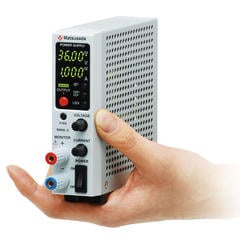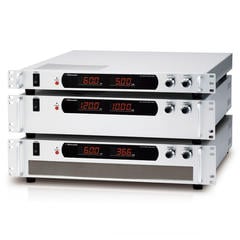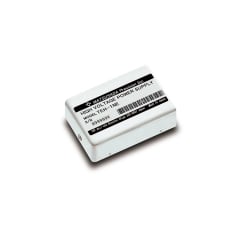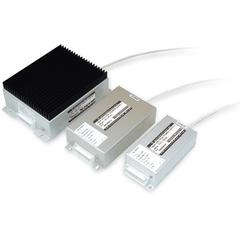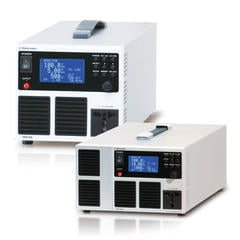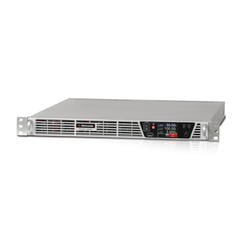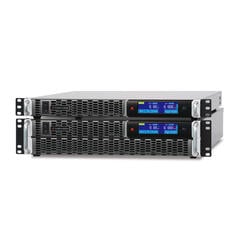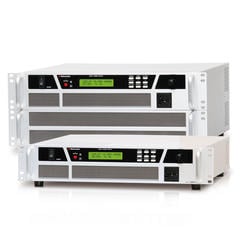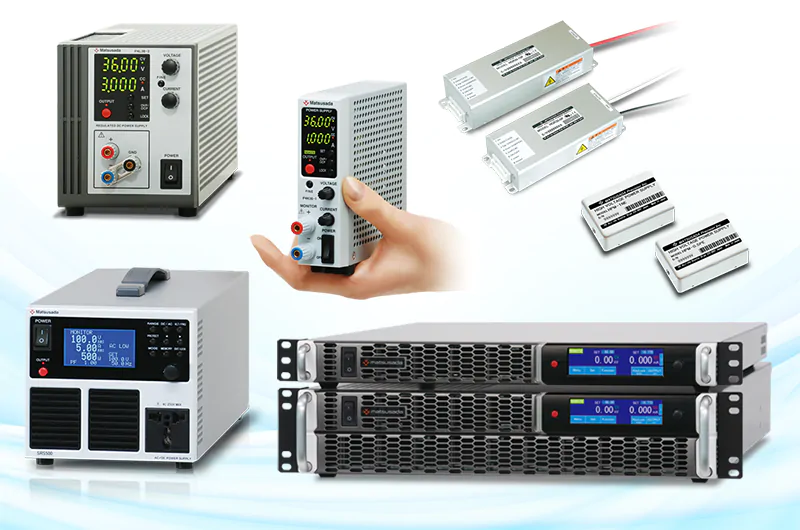
Outline of Power Supply
Power supplies generally refer to generators, power plants, batteries, and solar cells (photovoltaic cells). This section describes the basic knowledge of power supply units (power supply circuits) that convert power into suitable power used for electrical appliances.
Many electronic devices use DC voltages. However, commercial power supplied from an electrical outlet is alternating current (AC) of a fixed voltage of 100V or 200V. Therefore, a power supply unit (power supply circuit) is used for the operation of electronic devices to convert AC to DC and regulate voltages. For example, an AC adapter is commonly used as a power supply device. Power supplies built into electronic equipment are also called AC/DC power supplies or switched-mode power supplies. Some power supply circuits are known as DC/DC power supplies to convert an unstable DC into a stabilized DC. These power supplies have a constant output voltage that cannot be varied.
- AC adapter
We often see AC adapters at home. They are used for electronic devices like computers and smartphone chargers. Many of them have a compact square design, and we can plug them directly into an electrical outlet or connect them to a cord that plugs into an electrical outlet.
In the past, adapters used to be too big and heavy to carry. Thanks to innovative voltage conversion methods, a more compact and lightweight design can be adapted to them. Devices that supply a defined voltage, frequency, etc., are required to use dedicated ones.

- AC/DC power supply
- AC/DC power supply generally refers to a power supply device that converts AC to DC. Electronic equipment that uses DC incorporates a power supply circuit to supply from an electrical outlet. AC adapter is also a kind of AC/DC power supply.
- Switched-mode power supply
- The switched-mode power supply has a switch mode to convert AC to DC, similar to AC/DC power supply. New advancements in AC adapter design led to higher efficiency with smaller and lighter units, as mentioned in the AC adapter. In fact, it is due to the switching method replacing the linear method.
- DC/DC power supply
- The DC/DC power supply, also called DC/DC converter, is designed to input a DC voltage and output a different DC voltage. As the operating voltages vary depending on the electronic devices, a voltage needs to be converted to the appropriate voltage to operate their respective devices.
Power supply classification and application
A variety of power supplies are used in the development and evaluation of electrical equipment and production lines.
Power source we use in daily life is an electrical outlet. However, electricity supplied from an electrical outlet generates noise following momentary voltage drops. The power frequency for commercial AC power is 50Hz or 60Hz and the electricity is normally 100V or 200V.
Stable, noise-free electricity is a must in using electricity for operating and testing various electrical equipment. And different voltages, frequencies, and not only AC but DC are essential for such purposes. A power supply unit is used to provide stable electricity.
The device converts and supplies electricity of the required voltage and frequency, excluding noise from the electricity obtained from an electrical outlet. Power supplies are classified by applications for available DC, AC, and output voltage ranges.
Programmable DC power supply
The programmable power supply is used for a stable DC power supply. At Matsusada Precision, the programmable DC power supplies are classified to DC power supplies. Separating them from high voltage power supplies mentioned below, products with output voltage up to 1000 V are classified as DC power supplies.
They are used in experiments on electronic circuits, factory operation of production equipment, inspections, and research.
Moreover, it is also available to reproduce the electricity supplied by a battery during the inspection and testing of battery-powered equipment.
The programmable power supplies are further classified into series and switching regulator power supplies based on circuit method. A series regulator power supply is also referred to as a linear power supply, and it converts AC voltage to DC with a transformer.
On the other hand, a switching power supply has a feature that converts a switching current into high-frequency AC using coils and semiconductors, and then converts it back to DC for control.
As for the difference between linear and switching power supplies, see "Linear vs. Switching Power Supplies: Key Differences Explained"
Programmable DC power supply is classified into "DC constant voltage power supplies" and "DC constant current power supplies" according to whether the output voltage or output current is stabilized. In general, the voltage and current in a power supply circuit will change as the load (resistance) changes, based on Ohm's law.
Therefore, the operation of the circuit depends on which of the two is stabilized when the load changes. In other words, a DC constant-voltage power supply has a stable output voltage even when the load changes, and a DC constant-current power supply has a stable output current.
High voltage power supply
The high voltage power supply is a programmable DC power supply that provides high output voltage over thousands to tens of thousands of volts.
It has various shapes suitable for different applications: benchtop, rack mount, module, and PCB mount types. Some models have AC/DC input.
High voltage power supplies are suited for scanning electron microscopes, X-ray inspection systems, X-ray CT scanning, etc. As these devices are used for electronic detection or control, they require a very strong electric field to detect and control electrons in operation. High voltage is essential to generate such a strong electric field.
If noise and stability are still far satisfactory in performance, the devices would have a serious negative impact on images due to the noise. High voltage power supplies provide high stability and low ripple solution.
Programmable AC power source (AC power source)
Programmable AC Power Supply (AC Power Source)
The programmable AC power supply provides stable and reliable AC output. Whereas programmable DC power supplies deliver stable voltage, programmable AC power sources must also ensure stable waveforms.
AC power sources can be broadly categorized into two types: direct AC-AC conversion (single-stage), and AC-DC-AC conversion (two-stage), where AC is first converted to DC and then back to AC.
Direct AC-AC conversion methods include AC stabilizers, variac (slidac) transformers, and tap changer controls. The AC-DC-AC (two-stage) type is further divided into linear amplifier and inverter-based methods. Generally, programmable AC power supplies adopt the AC-DC-AC (two-stage) structure and are also capable of providing DC output when needed.
Each type has several conversion methods, each with its own advantages and disadvantages. The characteristics of each method are summarized below.
| Type | Method | Size | Efficiency | Cost | Response time | Distortion factor | Waveform Quality | Voltage Adjustment | Other features | Products |
|---|---|---|---|---|---|---|---|---|---|---|
|
Direct AC-AC conversion (single stage) [AC voltage converter] Example: Automatic Voltage Regulator (AVR) |
AC Stabilizer | Large | High | Low | Slow | Depends on the AC line | Automatic | - | ||
| Slidac transformer (Variac transformer) |
Large | High | Low | - | Depends on the AC line | Manual | - | |||
| Tap Changer | Large | High | Low | Slow | Depends on the AC line | Step/continuous | - | |||
|
AC to DC to AC conversion (two-stage) [AC voltage and Frequency converter] Example: AC power source Programmable AC power source |
Linear amplifier | Middle | Low | Expensive | Fastest | Lowest | Best (pristine signal) | Precise electronic control |
High Quality waveform Output voltage and frequency can be changed at any timing |
|
| Switching Inverter | Small | Moderate | Moderate | Fast | Moderate | Good (modern PWM) | Precise electronic control | Good balance of waveform quality, size, efficiency, and cost | DRK series, DRS series, DRJ series | |
Recommended products
Matsusada Precision manufactures and sells a variety of power supply devices that can be used in the development, evaluation, and manufacturing of electrical equipment.



